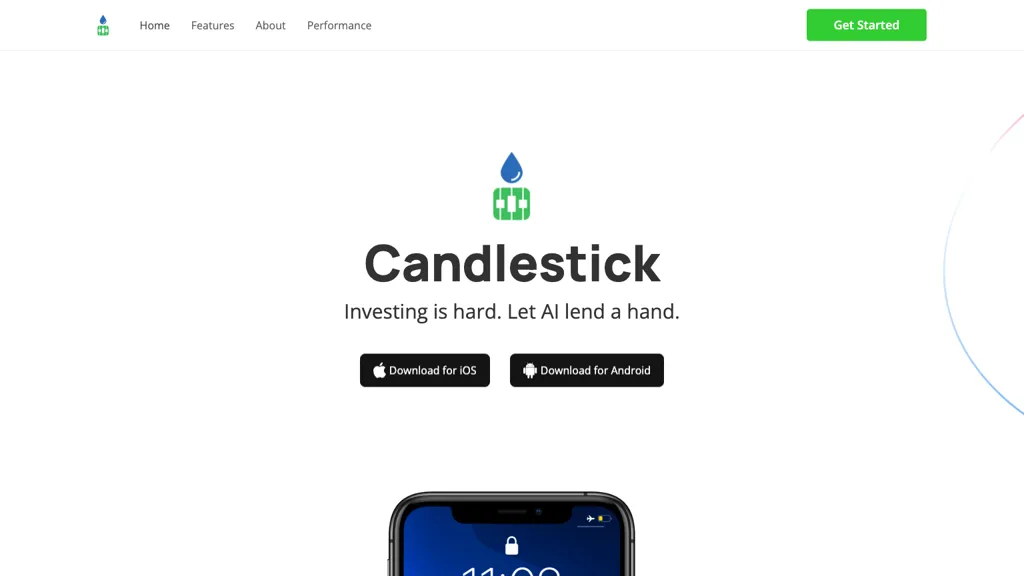Security and privacy are paramount when using AI stock Predicting/Analyzing trading platforms since they are often handling sensitive financial information and personal information. A data breach or misuse can result in significant financial losses, as and reputational damage. Here are the top ten suggestions to help you assess the security and privacy features of these platforms.
1. Take into consideration encryption of data
Transmitting data encrypted: Make sure your platform uses secure protocols (e.g. TLS/SSL), to encrypt information that is transferred between your devices and their servers.
Transporting encrypted data Make sure that the data being stored on a platform's servers has been encrypted with strong encryption standards, like AES-256.
End-to end encryption: Verify if your platform provides encryption from beginning to finish for communications and data that are sensitive.
2. Review the authenticity methods
Two-factor authentication (copyright) Check that your platform supports this so that you can add a layer of extra security.
Biometric authentication: Find out whether the app supports biometric login options (e.g. fingerprint, facial recognition) for mobile apps.
Password policies. Verify that the platform is enforcing strong password policies (e.g. minimum length and complexity requirements).
3. Verify compliance with the regulations.
Financial regulations: Ensure conformity with the applicable financial regulation (e.g. SEC FINRA MiFID II).
Law on data protection: If your business is with the region legally governed by these laws, verify your compliance.
Audit certifications: Verify if your platform has been the subject of audits by third parties or certifications.
Review Controls for Access to Data
Role based access: Use role-based accessibility controls to limit access to information to authentic users.
Check if you are able to create permissions with granular levels for different users and team members.
Activity monitoring: Find out whether the platform monitors and records user behavior for suspicious behaviour.
5. Examine Vulnerability Management
Regular updates: Ensure the platform is regularly updating its software to fix weaknesses.
Penetration Testing: Check if the platform is regularly subjected to penetration tests, which identifies and fixes security weaknesses.
Find bugs bounty programs. These are designed to motivate external security researchers (such as Google) to disclose vulnerabilities.
6. Evaluate Data Privacy Policies
Transparency: Review the privacy policies on the platform to know how your personal information is used, gathered, and shared.
Data minimization - Ensure that the platform only collects the data it needs to function.
Third-party Sharing: Verify whether the platform shares data with third-parties and, if so and under what conditions.
7. Verify Secure API Usage
API security: Make sure that the API of the platform API utilizes secured authentication methods (e.g., OAuth, API keys) and encrypts data exchanges.
Rate limiting. Examine the API's rate limitation to avoid the abuse.
Check whether the platform records API access for monitoring or auditing purposes, and for reporting.
8. Evaluate the Recovery of Incidents and Response
Plans for incident response: Make sure whether the platform you're using has a clearly defined incident response plans. This plan should cover the handling of data and security breaches.
Notification policies: Determine if users are notified promptly in the event of a security breach.
Make sure you have backups of data and disaster recovery plans.
9. Evaluate physical security measures
Data center Security: Ensure servers are hosted in secured data centers that have physical security measures in place (e.g. monitoring, access controls).
Redundancy Check the redundant platforms of the platform to ensure that data is available in the event of any hardware fails.
Examine the geographical distribution of data to ensure resilience.
10. Test User Privacy Controls
Data deletion - Ensure that you can delete all personal data completely from the website, if and when you stop using its services.
Privacy settings: Determine whether your platform has privacy settings to control the data that can be publicly shared or made available.
Check to see if anonymization is applied to data that is used in analytics or machine learning.
Bonus Tips:
Feedback and reviews from users: Use reviews and feedback to assess the reputation of a platform in terms of security and privacy.
Trial period: Test the privacy and security features of the platform by downloading the free trial.
Customer Support: Ensure that the platform offers a solid assistance for any questions or concerns relating to security.
The following tips will aid you in assessing the privacy and security aspects of AI stock-Predicting/Analyzing trading platforms. This will ensure that your personal and financial data is safe. A secure platform not just safeguards assets, it also builds trust in their services. Follow the best ai chart analysis for more advice including AI stock trading bot free, AI stock picker, ai investing app, ai for stock predictions, ai for stock trading, investing ai, ai investment platform, options ai, stock ai, ai investment platform and more.

Top 10 Tips For Assessing The Regulatory Conformity Of AI stock Forecasting/Analyzing Trading Platforms
Regulation compliance is a key element to evaluate AI-based trading platforms. Compliance assures that a platform's operations are within legal guidelines. Users data is protected and financial regulations are complied with, which reduces any risk of legal concerns. These are the top 10 suggestions to evaluate the compliance with regulations of these platforms:
1. Verify registration and licensing
The regulatory bodies: Make sure that the platform is registered and licensed by the appropriate financial regulatory body (e.g. SEC, FCA, ASIC, etc.) in your country.
Broker partnership: If a platform integrates with brokers, make sure that the brokers are properly licensed and regulated.
Public Records: Check out the website of your regulatory body to find out information about the status of your registration, past violations and other relevant data.
2. Measure Data Privacy Compliance
GDPR: If you operate in or serving users in the EU Make sure that your platform is compliant with the General Data Protection Regulation (GDPR).
CCPA for users living in California, verify conformity to the California Consumer Privacy Act (CCPA).
Data handling policies: Go through the policy of the platform's privacy of data to ensure that it clearly outlines what data users' information is collected, stored and shared.
3. Evaluation of Anti-Money Laundering Measures
AML Policies: The platform should have solid AML (Anti-Money Laundering) policies to detect the money laundering process and stop it.
KYC procedures: Find out whether the platform is using Know Your Customer (KYC), which verifies user identities.
Monitor transactions: Make sure that the platform tracks transactions to detect suspicious behavior and inform authorities about suspicious activity.
4. Make sure you are in compliance with Trading Regulations
Market manipulation: Make sure the platform is equipped with measures to stop market manipulation such as spoofing or wash trading.
Types of orders: Make sure that the website is compliant with regulations regarding order types.
Best execution: Make sure the platform follows the best execution practices. This ensures that transactions are executed at the most competitive price.
5. Cybersecurity Assessment
Data encryption - Make sure that the platform is using encryption to secure data either in transit or when it is at rest.
Response to incidents: Verify that the platform has a crisis response plan in place for cyber-attacks or data breaches.
Certifications: Make sure the platform has cybersecurity certifications.
6. Transparency Evaluation and Disclosure
Disclosure of fees: Ensure that the platform discloses all charges including hidden or additional fees.
Risk disclosure: Verify if the platform offers clear risk disclosures, specifically for leveraged or high-risk trading strategies.
Performance reporting: Ensure that the platform produces transparent and accurate performance data for its AI model.
7. Make sure that you are in the conformity to International Regulations
Transparency in trading across borders: If you are trading internationally, be sure the platform you use is in compliance to all laws and regulations.
Tax reporting: Check whether the platform offers tools or reports that can assist users in complying with tax laws (e.g., FIFO rules in the U.S.).
Respect for international sanctions: Make sure the platform adheres strictly to these rules and does not allow transactions between prohibited countries or entities.
8. Examine Record-Keeping and Audit Trails
Transaction records: Ensure that the platform maintains accurate records of all transactions to ensure audit and regulatory compliance.
Logs of activity for users (logs) You can check to see if the platform tracks user activity such as transactions and logins. Also, verify if the account settings have changed.
Audit readiness: Ensure that the platform has all the documentation and logs necessary to be able to pass a review by a regulator.
9. Verify compliance with AI-specific Regulations
Algorithmic trading regulations: If a platform is able to support algorithmic trading, ensure it's in compliance with regulations such as MiFID II in Europe or Reg SCI in the U.S.
Fairness and bias: Check if the platform monitors and mitigates biases in its AI models to ensure fair and ethical trading.
Explainability: Certain regulations require that platforms explain AI-driven predictions or choices.
10. Review user feedback and regulatory history
User reviews: Use feedback from users to assess the platform's regulatory conformity.
Regulatory history: Verify whether any violations of the regulations were committed, as well as fines and penalties.
Third-party inspections: Verify whether the platform is subjected regularly to third-party inspections by a third party in order to verify that the platform is in compliance.
Bonus Tips:
Legal consultation: Talk to a lawyer to ensure the platform meets all relevant regulations.
Trial period: Make use of a no-cost demo or trial period to evaluate the features of the platform that are compliant.
Customer Support: Ensure that the platform offers customer support for any queries or problems related to compliance.
The following tips can assist you evaluate the regulatory compliance for AI stock-Predicting/Analyzing trading platform. You'll be able to choose a system that is compliant with the legal frameworks and safeguards your rights. It is essential to be in compliance since it not only reduces legal risks, it also increases trust and confidence for the platform. Read the top get more info for ai for trading stocks for blog recommendations including stocks ai, ai software stocks, stock trading ai, AI stock price prediction, how to use ai for stock trading, ai investment tools, best ai penny stocks, AI stock prediction, best AI stocks, ai trading tool and more.
